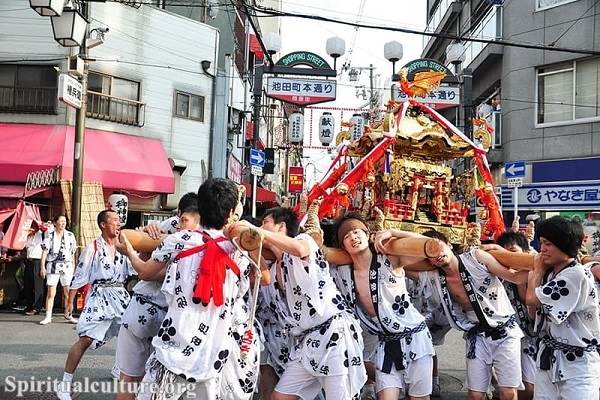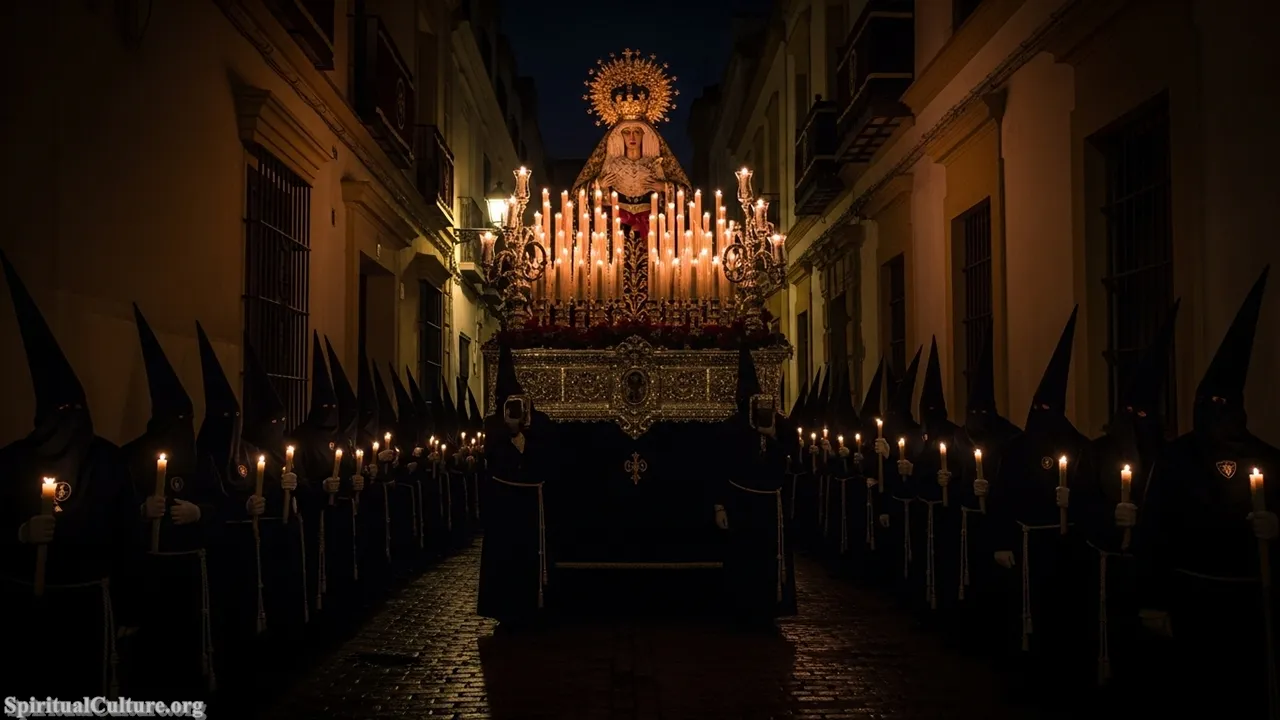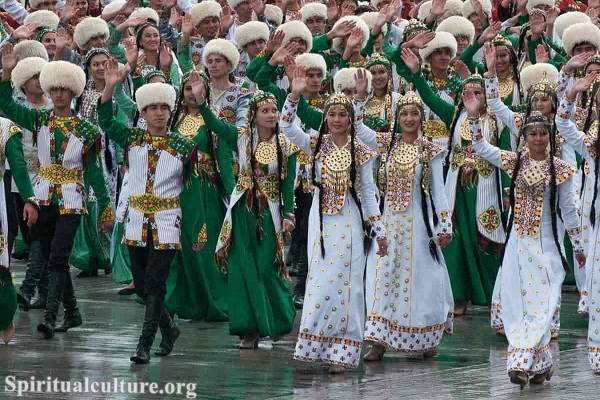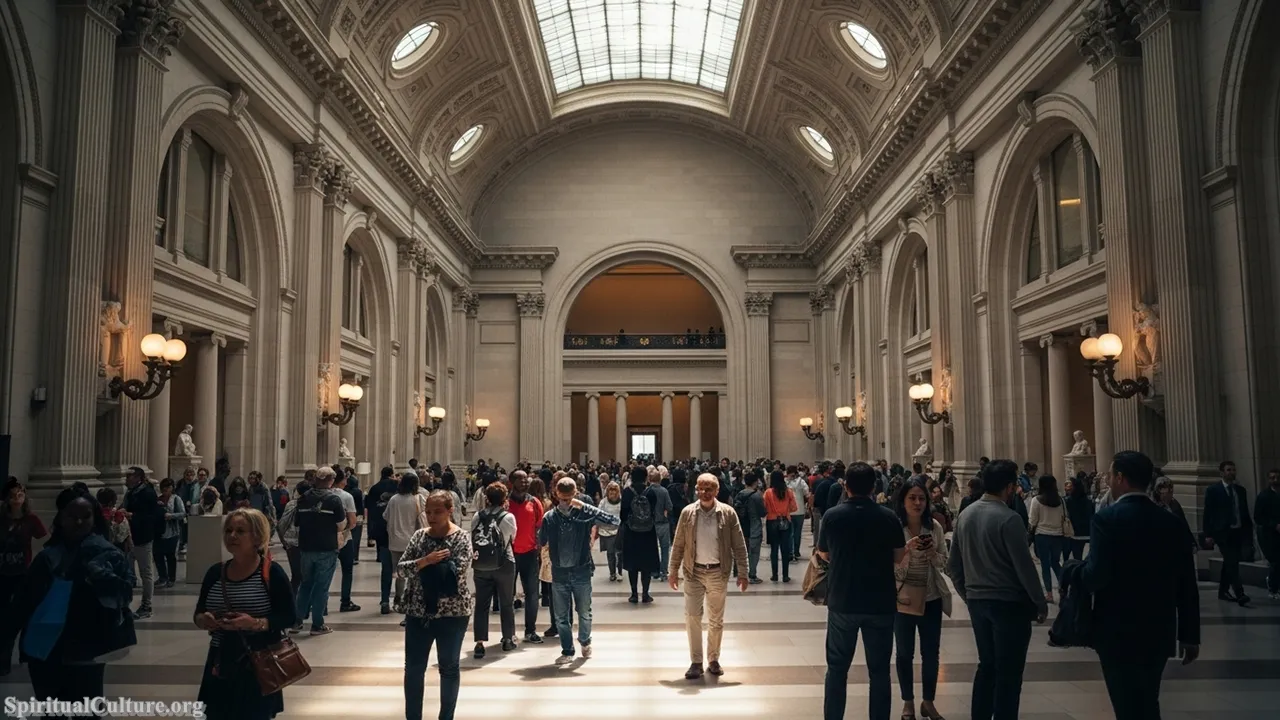The culture of America is a vibrant, multifaceted tapestry that reflects the nation’s diverse history, myriad of influences, and the unique blend of traditions that have shaped it over centuries. From its earliest days, America has been a land of convergence—where indigenous traditions met European customs, and where waves of immigrants brought with them languages, beliefs, and practices that collectively formed the foundation of what we now recognize as American culture.
In this article, Spiritual Culture delves deep into the intricate aspects of American culture, exploring its historical roots, linguistic diversity, rich traditions, and global influence, while also considering its future trajectories.
Historical Influences on American Culture
Role of Early Settlers and Native Americans
The earliest foundations of American culture were laid long before the arrival of European settlers, with Native American societies thriving across the continent. These indigenous cultures were rich in traditions, spiritual beliefs, and social systems, deeply connected to the land and nature. The arrival of European settlers in the 16th and 17th centuries marked the beginning of a complex relationship between these Native American communities and the newcomers.
Native American influences are still evident in various aspects of American culture, from place names (such as Ohio, Massachusetts, and Seattle) to agricultural practices and culinary traditions, such as corn cultivation and the use of herbs and spices. The settlers, in turn, introduced new technologies, livestock, and crops, leading to a cultural exchange that, while often fraught with conflict, also resulted in significant cultural blending. The Thanksgiving holiday, celebrated nationwide, is one such example—a tradition that originated from the early Pilgrims’ harvest celebration shared with the Wampanoag people in 1621.
Impact of Immigration Waves on Cultural Diversity
The United States is often described as a “melting pot” or “salad bowl” of cultures, a characterization that speaks to its history of immigration. Over the centuries, America has experienced multiple waves of immigration, each bringing new cultural elements that have been woven into the national fabric. The first major wave occurred in the late 19th and early 20th centuries, with millions of immigrants arriving from Europe, particularly from Ireland, Italy, and Eastern Europe. These groups brought with them languages, religious practices, and cultural traditions that enriched American society.
The impact of immigration is visible in every aspect of American life—from the diverse array of religious institutions to the variety of foods enjoyed across the country. For instance, Italian immigrants introduced pizza, which has since become a staple of American cuisine. Similarly, Jewish immigrants brought bagels, which have been widely adopted into the American breakfast tradition. The continuous influx of immigrants, including significant numbers from Asia, Latin America, and Africa, has further diversified American culture, making it one of the most culturally heterogeneous societies in the world. This diversity is celebrated in various ways, such as through cultural festivals, ethnic neighborhoods, and the official recognition of languages other than English in many states.
Influence of Colonialism and European Settlements
Colonialism played a critical role in shaping the early cultural landscape of America. The British, Spanish, French, and Dutch were the primary colonial powers that established settlements in different regions of the continent, each leaving a distinct cultural legacy. The British influence is perhaps the most pervasive, given that the thirteen colonies were primarily English-speaking and Protestant, and this laid the groundwork for many of the cultural norms and institutions that define America today. English became the dominant language, and the British legal system, educational structures, and religious practices were deeply entrenched.
In contrast, Spanish influence is particularly strong in the southwestern United States, including California, Texas, and Florida. Spanish colonialism introduced Catholicism, Spanish architecture, and a rich tradition of festivals, such as Día de los Muertos. French influence is most evident in Louisiana, where French language, cuisine, and the Catholic faith have left a lasting impact. New Orleans, for example, is famous for its French Quarter, Creole culture, and Mardi Gras celebrations. The Dutch influence, though less widespread, is still notable in parts of New York (formerly New Amsterdam), where Dutch customs and place names remain.
The cultural synthesis resulting from these colonial encounters can be seen in the fusion of architectural styles, religious practices, and even legal systems across the United States. The colonial era set the stage for the complex interplay of cultures that would continue to evolve as America expanded and diversified.
American Language and Dialects
Predominance of English and Regional Variations
English is the predominant language in the United States, but it is far from monolithic. Over the centuries, the English language has evolved differently across various regions of the country, leading to the development of distinctive regional dialects. These dialects not only reflect the geographical diversity of the country but also its cultural history.
In the Southern United States, for example, the Southern drawl is a well-known characteristic, with elongated vowels and a slower pace of speech. This dialect reflects the region’s historical isolation, agrarian economy, and the influence of African American Vernacular English (AAVE), which itself emerged from the blending of English with African languages during the period of slavery. In contrast, the Northeastern United States, particularly in New England and New York, is known for its clipped, fast-paced speech, with unique pronunciations such as the dropping of the “r” sound in words like “car” or “park.”
The Midwest, often referred to as having the most “neutral” American accent, has its own set of linguistic features, including the use of terms like “pop” for soda and a distinct nasal tone. The West Coast, particularly California, has developed its own dialect, influenced by the region’s multicultural population, with the “Valley girl” speech being a notable example, characterized by uptalk and the frequent use of filler words like “like.”
Influence of Spanish and Other Languages
Spanish is the second most spoken language in the United States, a testament to the country’s significant Hispanic population. States like California, Texas, Florida, and New Mexico have large communities of Spanish speakers, and the influence of the language is evident in various aspects of American life, from bilingual education programs to Spanish-language media outlets. Spanish words have also been incorporated into American English, particularly in regions close to the Mexican border, where terms like “fiesta,” “patio,” and “rodeo” are commonplace.
Beyond Spanish, America is home to speakers of many other languages, reflecting its immigrant heritage. Chinese, Tagalog, Vietnamese, and Arabic are among the most widely spoken languages in immigrant communities. The presence of these languages has led to a rich linguistic landscape where multilingualism is common, especially in urban areas like New York City, Los Angeles, and Miami. Public signage, government services, and even electoral ballots are often provided in multiple languages to accommodate non-English speaking residents, reflecting the country’s linguistic diversity.
The Role of Slang and Informal Language
Slang and informal language are integral to American culture, often serving as markers of identity and social belonging. American slang is constantly evolving, driven by various subcultures, including youth, ethnic communities, and online communities. For instance, African American Vernacular English (AAVE) has had a profound influence on American slang, contributing terms like “cool,” “dope,” and “lit,” which have become mainstream. The tech-savvy culture of Silicon Valley has also given rise to new slang terms like “hack,” “crash,” and “viral,” which are now part of the global lexicon.
The use of slang and informal language reflects the dynamic, ever-changing nature of American society. It allows individuals to express creativity, forge social connections, and navigate the complexities of modern life. Informal language, including contractions, idiomatic expressions, and colloquial phrases, is also a hallmark of American English, making it distinct from British English and other variants. This linguistic fluidity is emblematic of the broader cultural fluidity that characterizes America—a culture that is open to change, innovation, and the blending of different influences.
American Traditions and Holidays
Major National Holidays Celebrated in the U.S.
The United States is a nation that loves to celebrate, and this is reflected in its array of national holidays, each steeped in cultural and historical significance. Independence Day, celebrated on July 4th, is perhaps the most iconic American holiday. It commemorates the signing of the Declaration of Independence in 1776 and is marked by fireworks, parades, barbecues, and patriotic displays of red, white, and blue. This holiday encapsulates the American ideals of freedom and democracy, serving as a reminder of the nation’s founding principles.
Memorial Day and Veterans Day are two other significant holidays that honor those who have served in the military. Memorial Day, observed on the last Monday of May, is a somber day of remembrance for soldiers who have died in service to the country, often marked by ceremonies at cemeteries and war memorials. Veterans Day, celebrated on November 11th, recognizes all military veterans and is a day of gratitude and reflection on the sacrifices made to protect the nation.
Other major holidays include Labor Day, which honors the contributions of workers and the labor movement; Martin Luther King Jr. Day, which celebrates the life and legacy of the civil rights leader; and Presidents’ Day, originally established to honor George Washington but now a day to recognize all U.S. presidents. These holidays, while diverse in their origins and meanings, collectively reflect the values, history, and spirit of the American people.
Cultural Significance of Thanksgiving
Thanksgiving is a uniquely American holiday that embodies the values of gratitude, family, and togetherness. Celebrated on the fourth Thursday of November, Thanksgiving has its roots in the early colonial period, specifically the Pilgrims’ 1621 harvest feast shared with the Wampanoag people. Over time, this simple meal of thanksgiving evolved into a national holiday, officially proclaimed by President Abraham Lincoln in 1863 during the Civil War as a day of “Thanksgiving and Praise to our beneficent Father.”
Today, Thanksgiving is celebrated with a feast that typically includes turkey, stuffing, cranberry sauce, and pumpkin pie. It is a time for families to gather, reflect on their blessings, and enjoy a meal together. The holiday also has a significant cultural dimension, with traditions such as the Macy’s Thanksgiving Day Parade in New York City, televised football games, and the practice of volunteering to help those in need.
Thanksgiving is more than just a day of feasting; it is a reflection of the American spirit of generosity, resilience, and community. It serves as a reminder of the importance of gratitude and the bonds that unite families and communities, even in challenging times.
The Evolution of Halloween Celebrations
Halloween, celebrated on October 31st, is one of the most popular and widely observed holidays in the United States, known for its spooky, playful atmosphere and traditions. Halloween has its origins in the ancient Celtic festival of Samhain, which marked the end of the harvest season and the beginning of winter. The Celts believed that on this night, the boundary between the living and the dead was blurred, and spirits could roam the earth. The holiday was later influenced by Christian traditions, particularly All Saints’ Day and All Souls’ Day, and brought to America by Irish and Scottish immigrants in the 19th century.
In the United States, Halloween has evolved from a solemn occasion into a festive, community-oriented celebration. Children dress up in costumes and go “trick-or-treating,” visiting homes in their neighborhoods to collect candy. Homes and public spaces are often decorated with carved pumpkins, known as jack-o’-lanterns, and other spooky decorations like ghosts, skeletons, and witches. Halloween parties, haunted houses, and horror movie marathons are also popular ways to celebrate the holiday.
Halloween reflects America’s love of creativity, fun, and community engagement. It is a holiday that allows people of all ages to embrace their playful side, connect with their neighbors, and participate in a shared cultural experience that, while rooted in ancient traditions, continues to evolve with each generation.
Arts and Entertainment in American Culture
Overview of American Literature and Notable Authors
American literature is a rich and diverse field that has made significant contributions to world literature. From the early colonial writings to contemporary fiction, American authors have explored themes of identity, freedom, conflict, and the American Dream. The 19th century saw the emergence of iconic figures like Nathaniel Hawthorne, whose works such as “The Scarlet Letter” delve into themes of sin and redemption in Puritan New England, and Herman Melville, whose novel “Moby-Dick” is a profound exploration of obsession, fate, and the human condition.
Mark Twain, often referred to as the “father of American literature,” captured the essence of American life in the 19th century with his novels “The Adventures of Tom Sawyer” and “The Adventures of Huckleberry Finn.” Twain’s sharp wit, keen observation of human nature, and use of regional dialects have made his works enduring classics.
The 20th century brought a new wave of literary innovation, with authors like F. Scott Fitzgerald, whose novel “The Great Gatsby” is a quintessential exploration of the American Dream and the moral decay of society during the Jazz Age. William Faulkner’s complex narratives and deep exploration of the Southern experience in works like “The Sound and the Fury” and “As I Lay Dying” solidified his place as one of America’s greatest writers.
In more recent decades, American literature has continued to thrive with diverse voices that reflect the country’s multicultural landscape. Authors like Toni Morrison, whose novels “Beloved” and “Song of Solomon” explore the African American experience with lyrical intensity and historical depth, and Jhumpa Lahiri, who explores themes of identity, displacement, and cultural conflict in works like “The Namesake,” have expanded the scope of American literature.
The Evolution of American Cinema and Hollywood
American cinema has had a profound impact on global culture, and Hollywood, in particular, has become synonymous with the film industry. The origins of American cinema can be traced back to the early 20th century, with silent films like “The Birth of a Nation” (1915) and “Metropolis” (1927) laying the groundwork for the industry. The advent of sound in the late 1920s revolutionized filmmaking, leading to the Golden Age of Hollywood in the 1930s and 1940s. During this period, iconic films like “Gone with the Wind,” “Casablanca,” and “The Wizard of Oz” were produced, and stars like Humphrey Bogart, Katharine Hepburn, and James Stewart became household names.
The post-war era saw the rise of new genres, including film noir, characterized by its dark, moody atmosphere and complex characters, as seen in films like “Double Indemnity” and “The Maltese Falcon.” The 1950s and 1960s brought about a new wave of creativity and experimentation, with directors like Alfred Hitchcock, Stanley Kubrick, and Martin Scorsese pushing the boundaries of storytelling and cinematic techniques. This era produced classics such as “Psycho,” “2001: A Space Odyssey,” and “Taxi Driver,” which remain influential to this day.
Hollywood’s dominance in the global film industry has also been marked by its ability to adapt to changing tastes and technologies. The blockbuster era of the 1970s and 1980s, initiated by films like “Jaws” and “Star Wars,” introduced the concept of the summer blockbuster and transformed the way movies were marketed and consumed. The rise of digital technology in the 21st century has further reshaped the industry, with CGI and special effects playing a crucial role in films like “Avatar” and “The Avengers.”
Today, American cinema continues to be a powerful force in global culture, not only through its entertainment value but also through its ability to address social issues, reflect cultural shifts, and influence global perceptions of America.
Impact of Music Genres: Jazz, Blues, and Hip-Hop
American music is one of the most influential cultural exports of the United States, with genres like jazz, blues, and hip-hop having a profound impact both domestically and internationally. Jazz, often referred to as “America’s classical music,” originated in the early 20th century in African American communities in New Orleans. It is characterized by its improvisational nature, syncopated rhythms, and expressive melodies. Jazz legends like Louis Armstrong, Duke Ellington, and Miles Davis have left an indelible mark on the genre, making it a cornerstone of American music.
Blues music, another African American creation, emerged from the deep South in the late 19th century. It is rooted in the spirituals, work songs, and field hollers of enslaved Africans and their descendants. The blues’ emotive expression of pain, struggle, and resilience has resonated with audiences worldwide. Artists like B.B. King, Muddy Waters, and Robert Johnson have become synonymous with the genre, which has also influenced other musical forms, including rock and roll.
Hip-hop, which originated in the Bronx in the 1970s, is perhaps the most globally influential genre of the late 20th and early 21st centuries. What began as a cultural movement encompassing rap music, DJing, breakdancing, and graffiti art has grown into a worldwide phenomenon. Hip-hop’s ability to address social issues, express urban experiences, and provide a voice for marginalized communities has made it a powerful cultural force. Artists like Tupac Shakur, The Notorious B.I.G., Jay-Z, and Kendrick Lamar have not only shaped the genre but have also had a significant impact on global music culture.
These genres, while distinct in their origins and characteristics, share a common thread in their roots in African American culture and their capacity to transcend racial, cultural, and national boundaries. They reflect the broader American values of innovation, self-expression, and the blending of diverse influences.
Cuisine and Food Culture
Regional Variations in American Cuisine
American cuisine is as diverse as its population, with each region of the country offering its own unique culinary traditions. The South, for example, is known for its rich, comforting dishes often referred to as “soul food.” Staples include fried chicken, collard greens, cornbread, and dishes like gumbo and jambalaya, which have Creole and Cajun influences. Barbecue, particularly in states like Texas, Tennessee, and the Carolinas, is a deeply rooted tradition, with each region offering its own take on smoked meats and tangy sauces.
In contrast, New England cuisine is characterized by its emphasis on seafood, thanks to its coastal location. Clam chowder, lobster rolls, and baked beans are iconic dishes, reflecting the region’s colonial history and maritime culture. The Midwest, known as “America’s breadbasket,” offers hearty, straightforward fare like casseroles, pot roasts, and corn-based dishes, reflecting its agricultural roots.
The West Coast, particularly California, is known for its emphasis on fresh, local ingredients and a fusion of international flavors. The state’s proximity to Mexico has influenced its cuisine, with dishes like tacos, burritos, and enchiladas being staples. The farm-to-table movement, which emphasizes locally sourced, organic ingredients, also originated in California and has had a significant impact on American food culture as a whole.
Influence of Immigrant Cultures on American Food
Immigration has played a crucial role in shaping American cuisine, turning it into a melting pot of flavors and culinary traditions. Italian immigrants, for example, introduced pasta, pizza, and espresso to the American palate, while Jewish immigrants from Eastern Europe brought bagels, deli sandwiches, and pickles. Chinese immigrants, particularly during the Gold Rush era, introduced dishes like chop suey and chow mein, which have since become American staples.
Vietnamese immigrants have popularized dishes like pho and banh mi, while Ethiopian immigrants have introduced Americans to spicy stews and injera. The fusion of these various culinary traditions has led to the creation of new food trends and innovations, such as Korean BBQ tacos and sushi burritos, reflecting the dynamic and evolving nature of American food culture.
Popular Fast Food Culture and Its Global Impact
Fast food has become an integral part of American culture, characterized by its convenience, affordability, and consistency. The rise of fast food chains like McDonald’s, Burger King, and Wendy’s in the mid-20th century revolutionized the way Americans eat, offering standardized, quick meals that could be enjoyed on the go. The fast food model, which emphasizes speed and efficiency, has had a profound impact on global food culture, with American fast food chains expanding to virtually every corner of the globe.
The global spread of American fast food has been both praised and criticized. On one hand, it represents the American values of innovation and entrepreneurship, offering a recognizable and accessible product worldwide. On the other hand, it has been criticized for contributing to global health issues, such as obesity and diet-related diseases, and for its role in the erosion of local food traditions. The fast food industry’s influence is a testament to America’s cultural impact, highlighting both the reach and the consequences of its global presence.
Fashion and Lifestyle
Evolution of American Fashion Trends
American fashion has undergone significant changes throughout its history, reflecting broader cultural and social shifts. In the early 20th century, fashion was heavily influenced by European styles, with designers like Coco Chanel and Christian Dior setting trends that were eagerly adopted in the United States. The Roaring Twenties, for instance, saw the rise of flapper dresses and bobbed hair, symbolizing a break from traditional norms and a celebration of newfound freedoms.
The mid-20th century brought about dramatic changes in fashion, with the rise of casual wear and the influence of pop culture. The 1950s saw the popularity of the “Ivy League” look, characterized by tailored suits and preppy styles, while the 1960s embraced youth culture and countercultural movements with bold prints, miniskirts, and psychedelic patterns. The 1970s and 1980s continued this trend with the rise of street fashion and the influence of music icons like David Bowie and Madonna.
In recent decades, American fashion has become increasingly diverse and inclusive, with a greater emphasis on individual expression and sustainability. The rise of streetwear, influenced by hip-hop culture, has led to the popularity of brands like Supreme and Off-White, while the focus on sustainability has given rise to eco-friendly fashion lines and ethical clothing practices. American fashion continues to evolve, reflecting changing attitudes towards identity, self-expression, and environmental responsibility.
Influence of Pop Culture on American Lifestyle
Pop culture has a profound impact on American lifestyle, shaping everything from fashion and entertainment to social norms and consumer behavior. Television shows, movies, and music often set trends and influence public perceptions, creating a shared cultural experience that spans generations. Iconic television shows like “Friends,” “The Simpsons,” and “Game of Thrones” have not only entertained audiences but have also become part of the cultural fabric, influencing language, fashion, and social behavior.
Music, too, plays a significant role in shaping American lifestyle. From the rock ‘n’ roll revolution of the 1950s to the rise of hip-hop and electronic dance music in recent decades, popular music has influenced everything from fashion choices to dance styles. Music festivals like Coachella and Lollapalooza have become cultural landmarks, drawing attendees from around the world and showcasing the latest trends in music and fashion.
Pop culture also drives consumer behavior, with trends and fads often originating from movies, TV shows, or celebrity endorsements. The rise of social media platforms like Instagram and TikTok has further amplified this influence, allowing trends to spread rapidly and creating new opportunities for influencers and brands to connect with audiences.
American Sports and Their Cultural Relevance
Sports are a central aspect of American culture, with a deep-rooted passion for athletics and competition that spans various disciplines. American football, baseball, and basketball are among the most popular sports, each with its own unique traditions and cultural significance.
Football, particularly the National Football League (NFL), is a major cultural phenomenon in the United States. The Super Bowl, the championship game of the NFL, is one of the most-watched television events in the country, featuring elaborate halftime shows and commercials that often become cultural touchpoints. Football games are also major social events, with tailgating parties and fan gatherings adding to the communal experience.
Baseball, often referred to as “America’s pastime,” has a rich history that dates back to the 19th century. The sport’s traditions, such as the seventh-inning stretch and the singing of the national anthem, are integral to the American baseball experience. Iconic teams like the New York Yankees and the Boston Red Sox have cultivated a loyal fan base, and the sport continues to hold a special place in American culture.
Basketball, with its roots in urban communities and schools, has grown into a global sport, with the National Basketball Association (NBA) showcasing some of the best talent from around the world. The cultural impact of basketball can be seen in its influence on fashion, music, and youth culture, with players like Michael Jordan and LeBron James becoming cultural icons.
American sports culture is characterized by its enthusiasm, competitive spirit, and the sense of community that comes from supporting local and national teams. The cultural relevance of sports extends beyond the games themselves, shaping social interactions, entertainment, and even politics.
Religion and Spirituality in America
Diversity of Religions Practiced
The United States is a religiously diverse country, with a wide range of beliefs and practices represented among its population. Christianity is the largest religion, encompassing various denominations such as Protestantism, Catholicism, and Orthodoxy. Protestantism, in particular, is highly diverse, with numerous denominations including Baptists, Methodists, Lutherans, and Evangelicals, each with its own traditions and practices.
Judaism, Islam, Buddhism, Hinduism, and other religions also have significant followings in the United States. Jewish communities have a rich history in America, contributing to the cultural and intellectual life of the country. Islam has grown significantly, with diverse Muslim communities practicing their faith across the nation. Buddhism and Hinduism, introduced through immigration and cultural exchange, have established vibrant communities and practices.
The rise of non-religious or secular individuals is also a notable trend, with increasing numbers of Americans identifying as agnostic, atheist, or “none” when it comes to religious affiliation. This growing secularism reflects a broader trend towards individualism and personal belief systems, influencing various aspects of American culture and society.
The Role of Religion in American Society
Religion plays a multifaceted role in American society, influencing public life, politics, and cultural norms. Religious institutions often provide social services, including education, healthcare, and community support, contributing to the welfare of diverse communities. Places of worship also serve as centers for social and cultural activities, fostering a sense of community and belonging.
Religion has also been a significant factor in American politics, shaping policy debates and electoral choices. Issues such as abortion, marriage equality, and immigration have seen strong religious perspectives influencing public opinion and legislation. The intersection of religion and politics is a complex and often contentious aspect of American life, reflecting the diverse and sometimes conflicting values held by different religious and secular groups.
Impact of Secularism on American Culture
The increasing influence of secularism has led to changes in American culture, particularly in the realms of public policy, education, and social norms. The separation of church and state, enshrined in the Constitution, has led to a more pluralistic and inclusive approach to governance, ensuring that public policies and institutions are not dominated by religious considerations.
In education, secularism has influenced curriculum choices and the way religious topics are approached. Public schools are required to teach secular subjects and provide a neutral environment for students of all faiths and beliefs. This has led to greater emphasis on science and critical thinking, while also fostering an environment where diverse perspectives can be discussed and respected.
Social norms have also evolved in response to secularism, with a greater focus on individual rights and freedoms. Issues such as LGBTQ+ rights, gender equality, and reproductive rights are increasingly recognized and supported, reflecting a shift towards a more inclusive and egalitarian society. Secularism has contributed to a cultural climate that values diversity and personal autonomy, shaping the direction of American cultural and social evolution.
Social Issues and Movements
Impact of Civil Rights Movement on American Society
The Civil Rights Movement of the 1950s and 1960s was a transformative period in American history, marked by efforts to end racial segregation and discrimination against African Americans. Led by figures such as Martin Luther King Jr., Rosa Parks, and Malcolm X, the movement sought to achieve equality and justice through nonviolent protest, legal challenges, and grassroots activism.
The impact of the Civil Rights Movement is still felt today, with significant advances in legislation and social attitudes. Landmark achievements include the Civil Rights Act of 1964, which outlawed discrimination based on race, color, religion, sex, or national origin, and the Voting Rights Act of 1965, which aimed to eliminate barriers to voting for African Americans. These legal changes paved the way for greater participation and representation of African Americans in various aspects of American life, including politics, education, and employment.
The movement also inspired other social justice movements, including those advocating for women’s rights, LGBTQ+ rights, and environmental justice. The legacy of the Civil Rights Movement continues to influence contemporary struggles for equality and social change, emphasizing the ongoing need for activism and advocacy in the pursuit of justice.
Current Social Justice Movements in America
Contemporary social justice movements build on the foundations laid by the Civil Rights Movement, addressing a wide range of issues related to inequality and discrimination. The Black Lives Matter (BLM) movement, which emerged in response to police violence and systemic racism, has become a powerful force for advocating racial justice and reform. BLM has organized protests, engaged in policy advocacy, and raised awareness about issues affecting Black communities.
The Me Too movement, which gained prominence in the wake of high-profile sexual harassment and assault cases, focuses on addressing gender-based violence and promoting women’s rights. It has led to greater awareness of workplace harassment and the need for systemic change in how such issues are addressed and reported.
Other social justice movements, such as those advocating for immigrant rights, climate justice, and LGBTQ+ equality, continue to address pressing issues and advocate for policy changes. These movements reflect a growing recognition of the interconnectedness of various forms of inequality and the need for intersectional approaches to social justice.
The ongoing activism and advocacy of these movements highlight the dynamic nature of social justice efforts in America, emphasizing the importance of continued engagement and action in the pursuit of a more equitable and inclusive society.





